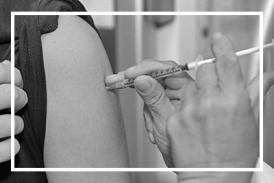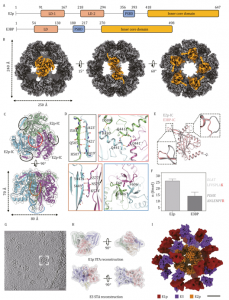A flexible powerhouse: Researchers unveil the dynamic blueprint of a key metabolic enzyme
GA, UNITED STATES, May 30, 2025 /EINPresswire.com/ -- In a landmark discovery, researchers have unveiled the highly dynamic and adaptable architecture of the mammalian pyruvate dehydrogenase complex (PDHc)—a central enzyme hub that fuels cellular energy production. Leveraging state-of-the-art cryo-electron microscopy (cryo-EM) and cryo-electron tomography (cryo-ET), the research team captured the complex in action, revealing a surprising degree of structural flexibility that defies long-standing models. This breakthrough provides critical insights into how PDHc maximizes catalytic efficiency, with significant implications for metabolic disease research.
As a gatekeeper between glycolysis and the tricarboxylic acid cycle, pyruvate dehydrogenase complex (PDHc) plays a pivotal role in converting pyruvate into acetyl-CoA. Despite its essential metabolic function, the native architecture of PDHc has remained poorly understood due to its large size and complex organization. Early models proposed a highly ordered structure, yet the precise arrangement and behavior of its peripheral subunits remained a mystery. This structural ambiguity has hindered efforts to decode PDHc-linked disorders, including lactic acidosis and neurological deficits, underscoring the urgent need for high-resolution, in situ visualization.
Published on August 24, 2024, in Protein & Cell, this letter-style study by researchers from Tsinghua University, Shenzhen University, and King Abdullah University of Science and Technology (KAUST), etc. employed cutting-edge cryo-electron microscopy (cryo-EM) and cryo-electron tomography (cryo-ET) techniques to visualize PDHc extracted from porcine heart tissue. The team achieved near-atomic resolution (3.66 Å) of the inner core and captured the elusive dynamics of peripheral enzymes E1p and E3, shedding new light on PDHc’s structural organization and functional logic.
The team found that PDHc’s core forms a dodecahedral scaffold built from 60 inner core domains, confirming the long-debated “40:20” stoichiometry of E2p to E3BP subunits through quantitative isotopic mass spectrometry. Cryo-ET exposed an unexpected level of peripheral flexibility: E1p and E3 subunits showed no fixed positions but instead formed a dynamic, irregular cloud around the core, breaking with the traditional image of a rigid, symmetrical shell. On average, 21 E1p and 13 E3 subunits were observed per complex, with spatial distributions following a Gaussian profile. Intriguingly, the study revealed novel interaction modes between E1p and E2p’s lipoyl domains, suggesting a hidden layer of regulation that may fine-tune the complex’s activity under shifting metabolic conditions.
Dr. Sai Li, one of the co-corresponding authors, said: This study overturns decades of structural assumptions. We now understand that PDHc’s apparent disorder is, in fact, a design feature—allowing it to rapidly adjust to metabolic demands. This flexible architecture may be the key to its efficiency, and a critical factor in disease pathology when the system breaks down.
These findings could catalyze new therapeutic strategies for PDHc-related diseases, such as inherited metabolic syndromes and mitochondrial dysfunction. By pinpointing the flexible interaction sites within PDHc, researchers can begin to design molecules that modulate its function with precision. Furthermore, the integrative imaging approach showcased in this study sets a new standard for capturing the native states of large, dynamic protein assemblies—opening new frontiers in structural biology, metabolic engineering, and drug discovery.
References
DOI
10.1093/procel/pwae044
Original Source URL
https://doi.org/10.1093/procel/pwae044
Funding Information
This work was supported by the National Key R&D Program of China (2022YFA1302701), the National Natural Science Foundation of China (32030056 to M.Y.; 32241031 and 32171195 to S.L.), the scientific project of Beijing Life Science Academy (2023300CA0090), Tsinghua University Initiative Scientific Research Program (2023Z11DSZ001), the King Abdullah University of Science and Technology (KAUST) Office of Sponsored Research (OSR) under Award (OSR-2020-CRG9-4352), and Office of Research Administration (ORA) under Award No. URF/1/4352-01-01, FCC/1/1976-44-01, FCC/1/1976-45-01, REI/1/5234-01-01, and REI/1/5414-01-01.
Lucy Wang
BioDesign Research
email us here
Legal Disclaimer:
EIN Presswire provides this news content "as is" without warranty of any kind. We do not accept any responsibility or liability for the accuracy, content, images, videos, licenses, completeness, legality, or reliability of the information contained in this article. If you have any complaints or copyright issues related to this article, kindly contact the author above.
Global Home Blood Pressure Monitoring Devices Market Forecast To Reach $4.52 Billion By 2029 With 13.3% Annual Growth
Hair Removal Devices Market Report 2025: Personal Grooming Awareness Drives Growth to $3.88 Billion by 2029
Global High-End Cellomics Market Outlook 2025–2034: M&A Trends, Expansion Strategies & Competitive Benchmarking
Kalendarium
Więcej ważnych informacji
 Jedynka Newserii
Jedynka Newserii

 Jedynka Newserii
Jedynka Newserii

Farmacja

Zagrożenie krztuścem pozostaje najwyższe od ponad trzech dekad. Odporność utrzymuje się do 10 lat po szczepieniu
W ubiegłym roku na krztusiec zachorowało ponad 32 tys. osób. To ok. 35 razy więcej niż rok wcześniej. Ostatnie tygodnie przynoszą wyhamowanie tendencji wzrostowej, ale Główny Inspektor Sanitarny przestrzega przed tą groźną chorobą i wskazuje na konieczność szczepień u dzieci już w okresie niemowlęcym i szczepień przypominających u dorosłych. Dużą rolę w promowaniu tej jedynej formy profilaktyki odgrywają pielęgniarki, które nie tylko informują o korzyściach ze szczepień, ale też mogą do nich kwalifikować.
Bankowość
Zdaniem 80 proc. Polaków ceny nieruchomości są wysokie lub bardzo wysokie. Mimo to i tak wolimy posiadać na własność, niż wynajmować

Tylko 26 proc. Polaków uważa, że mamy obecnie dobry moment na zakup nieruchomości. Dla ośmiu na 10 ankietowanych ceny nieruchomości są obecnie wysokie lub bardzo wysokie. 65 proc. ocenia też, że niewiele osób z ich otoczenia może sobie teraz pozwolić na zakup mieszkania lub domu – wynika z badania „To my. Polacy o nieruchomościach” portalu ogłoszeniowego Nieruchomosci-online.pl.
Transport
Nowe opłaty za emisję CO2 mogą spowodować wzrost kosztów wielu małych i średnich firm. Eksperci apelują o mądre instrumenty wsparcia [DEPESZA]

System ETS2, który zacznie obowiązywać od 2027 roku, nałoży podatek na paliwa kopalne wykorzystywane do ogrzewania budynków czy w transporcie. Koszty w dużej mierze poniosą dostawcy, w tym małe i średnie firmy. – Potencjalny wpływ systemu ETS2 na sektor MŚP w Polsce będzie znacznie mniej drastyczny, niż mogłoby się wydawać. Konieczne jest jednak przygotowanie odpowiednich instrumentów, które wesprą przedsiębiorców w przemianie w kierunku niskoemisyjnym, ale jednocześnie będą unikały podwójnej kompensacji – wskazuje raport WiseEuropa pt. „Wędka czy ryba? Wsparcie dla polskich MŚP w związku z wprowadzeniem ETS2”.
Partner serwisu
Szkolenia

Akademia Newserii
Akademia Newserii to projekt, w ramach którego najlepsi polscy dziennikarze biznesowi, giełdowi oraz lifestylowi, a także szkoleniowcy z wieloletnim doświadczeniem dzielą się swoją wiedzą nt. pracy z mediami.



![Nowe opłaty za emisję CO2 mogą spowodować wzrost kosztów wielu małych i średnich firm. Eksperci apelują o mądre instrumenty wsparcia [DEPESZA]](https://www.newseria.pl/files/1097841585/664-ciezarowki-postoj-foto2,w_85,_small.jpg)





.gif)

 |
| |
| |
|